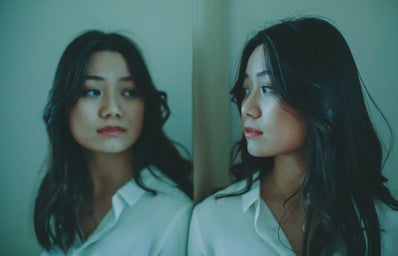In March of 2022, the Atlanta shootings at spas completed one year. The crime happened when a man invaded three spas in Atlanta, Georgia, and killed eight people, of which six were Asian women. This case, however, wasn’t seen as a demonstration of racism. Quite the contrary: the motivations of the crime were pointed out as the shooter trying to get rid of a form of temptation represented by the women.
This whole situation and the racism suffered by the Asian community were aggravated by the covid-19 pandemic and the rise in discrimmination against Asians that followed it. All of this brings up a problem that has been going on for centuries: the fetishization of East Asian women.
The History of the Fetishization
This idea that Asian women are more desirable than others for being docile, submisse and sexually available isn’t new. In fact, it dates back to the 18th century.
In 1875, the United States created the Page Act of 1875, which banned the immigration of women from “China, Japan or any Oriental country” under the pretext that they were working as prostitutes in the american territorry and damaging the nations moral code. In other words, this law defined all Asian women as prostitutes, even though that couldn’t be further form the truth.
As the years went by, the US engaged in conflicts involving other Asian Countries, which made the notion that East Asian women existed solely to pleasure the white man grow more and more. Also, that fetichization was reinforced by the fact that many Asian women were made sexual slaves during those periods.
To make matters even worse, that ideology was perpetuated in cultural productions, such as the opera Madame Butterfly and the play The Good Woman of Szechuan. Both of these works portray the Asian woman as submissive, innocent and willing to do anything to fulfill the wishes of a man.
The Fetishization in Media
It’s worth pointing out that the fetishization is still present in contents produced by the media nowadays. That extends all the way from works inspired by Madame Butterfly to James Bond’s spy movies.
Overall, Asian women are represented in one of two ways: the “Dragon Lady”, or the “Lotus Blossom” (also known as “China Doll”).
The first trope can be defined as a cold, calculating and manipulative woman that doesn’t hesitate to use her sexuality to achieve her goals. Examples of “Dragon Ladies” can be seen in pictures like You Only Live Twice, from the 007 franchise. In the movie, the character Ling, after sleeping with agent James Bond, hands him to enemy spies, which leads the public to believe that the entire point of their relationship was that mission.
The latter trope characterizes a more innocent, exotic, pure, delicate, and, most importantly, submissive woman. There is no shortage of cases of “Lotus Blossom” representation, the biggest one being the prostitute Kim from the Madame Butterfly inspired musical Miss Saigon. In the plot, after being “bought” by an American GI, Kim gets pregnant and left behind in post-war Vietnam at only 17. Just like the opera in which it was based, Miss Saigon ends with the protagonist comminting suicide to give her son a better life.
The problem lies not only with the lack of diversity in the tropes used by these productions, but also with the huge successes that they achieve. As a result, the public gets an extremely limited view of Asian women and the way they behave.
K-pop, Animes and “Yellow Fever”
Another media aspect that contributes to the fetishization of Asian Women is the way they are portrayed by the anime and K-pop industries.
Generally speaking, they still follow the “Dragon Lady” and “Lotus Blossom” tropes, but with the worsening factor that they receive massive amounts of attention and are one of the main fuel sources of the so-called “Yellow Fever”.
“Yellow Fever” is used to define those who desire to date Asian people (men or women), solely due to their origins. That is, the “Yellow Fever” completely disregards the person’s identity, placing the Asian in the place of a simple object that serves to attend someone’s desires.
There’s a significant share of anime that is especially problematic and cruel towards Asian women. Some productions can contain female characters that fit perfectly in the “Lotus Blossom” stereotype, going so far as to represent them as child-like students, creating the famous “college girl” fantasy.
And the problems aren’t limited to the role taken by these characters, since most of the time their bodies are drawn in an extremely curvy way and their clothes are unnecessarily sensual. All the while their voices are weirdly close-sounding to a child’s.
Not only that, the K-pop industry can be damaging to both men and women, since the groups are fabricated by the production companies to match patterns that are considered “desirable” by society. With that, the artists are barred from expressing their true identities and are subjected to ruthless fetishization.
Despite all that, the anime and K-pop culture has made its way around the world, and has garnered millions of fans. However, it is still important to recognize the downsides of some parts of this culture and the impacts they can have on the people affected by it. One of the examples of that is the rise of the “Yellow Face”, that was caused by the popularization of this culture and the stereotypes it carries with it.
Why Having “Yellow Fever” is Different from Having “A Type”
Having a type is feeling attracted to a certain kind of person and that’s completely normal. For example, it’s totally fine if someone feels drawn to tall people with short hair and glasses since, in these cases, those people’s personality isn’t guessed based on their appearance alone, which gives them room to like music, reading and playing tennis, or to hate all that.
However, that’s not the case with Asian people. Due to their looks, they get placed in certain little boxes that already contain a pre-defined personality for them, even if that doesn’t fit their own. And, to add insult to injury, they’re expected to feel flattered by that.
How the fetishization Affects Asian Women
Sentences like “I’ve always wanted to date an Asian girl” or “you Asian are always so good looking” are seen as compliments by the ones who say them. But when an Asian Woman tries to express her discontent with them, society doesn’t take her seriously. After all, these sayings are a compliment and a wonderful pick-up line, aren’t they?
As a matter of fact, these remarks and similar others are nothing but insults that are dangerously close to racism. When an East Asian Woman hears these phrases, she doesn’t take them as a compliment. On the contrary, she takes them as an erasure of her identity, her likes and dislikes, her personality and history. Not a single human being would feel good about that.
Furthermore, the entire notion that a whole ethnic could share the same personality traits is absurd and, in fact, racist. That’s due to the fact that it created an idea that all the members of this group are the same and that, consequently, they must behave in the same ways. Not only that, the ranking of ethnic communities based on how desirable they are in a relationship generates a hierarchy and motivates conflicts between them.
On the other hand, it’s worth noticing that the impacts of fetishization don’t stop there. In the field of personal relationships, Asian women are also very affected by it. The main reason for that is the expectations that are placed upon her – that her manners should be docile, pure and innocent, but mostly submissive. When that’s not compatible with reality, she is harshly criticized.
Also in the personal relationships field, when someone of Asian ancestry is told by their partner that they “always wanted to get with an Asian”, it creates the impression that the entire foundation of the relationship is their origin. With that, the Asian person’s whole identity is pushed aside and replaced by a single label and everything that follows it: Asian.
The result of all those things is that it is not rare to find Asian Women that are reluctant to accept and make their origins publicly known. This is something that no one should be forced to go through.
——————————————–
The article above was edited by Julia Queiroz.
Like this type of content? Check Her Campus Cásper Líbero’s home page for more!



